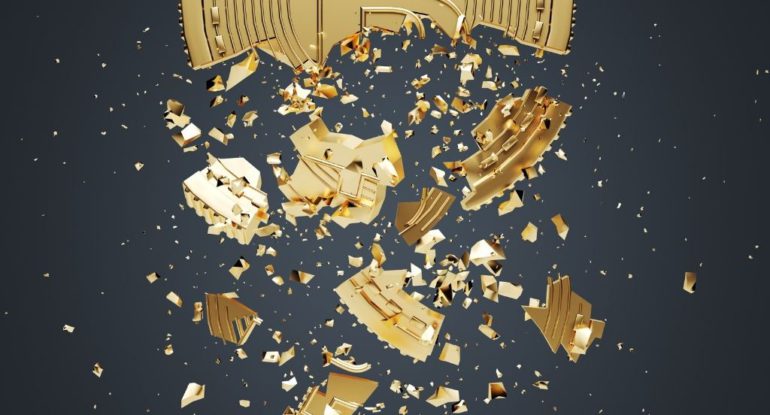5 Burning Questions About NFT Market Boom and Burst

The discussion surrounding nonfungible tokens (NFTs) has gone something like this since they blasted into the public consciousness in 2020 with million-dollar purchases of digital artifacts: The future of art and business is the NFT market!
NFTs are a useless fraud, not at all! No, NFTs have a restricted but beneficial future performing some as-yet-unknown task! Those are well-known arguments in the field of digital currency. In the boom and bust cycle NFTs have experienced similar, with significant gains and losses along the way. For example, the cost to join the Bored Apes Yacht Club by purchasing an NFT of an image of a bored ape soared to $420,430 before falling almost 79 percent in June. Similarly, the JPG NFT Index, which tracks a select number of blue-chip NFT projects, had fallen by more than 70% since its launch in April.
Sparked off by the rise of @BoredApeYC, the #NFT boom was one of the biggest surprises of 2021.
Traders have since been trying to analyze the NFT industry more methodically through its market cycles.
Learn more about this in our new blog article below!https://t.co/3wgQwq6XhM
— Infinity Ventures Crypto (IVC) (@ivcryptofund) July 20, 2022
How do nonfungible tokens work?
Consider them as digital authenticity certificates. An NFT is a distinctive barcode for a digital work of art or collectible developed by an algorithm and is a one-of-a-kind, irreplaceable identifier. It helps solve a long-standing challenge for digital artists: how to convey scarcity for something infinitely reproducible. The Mona Lisa is priceless because of her uniqueness, but a signed and numbered Peter Max print of his interpretation of the work costs $4,900, and Mona Lisa posters cost $7.95.
Selling phoney tokens is more difficult than selling real fake artwork in the NFT market because blockchain technology offers security, but it is still doable. When an artist wishes to sell a piece of digital art, the mint (produce) an NFT that is then linked to the ownership of that particular piece of art; since NFTs are registered on public blockchain ledgers, it is possible to trace ownership, previous selling prices, and the total number of copies in circulation. The rarity and popularity of NFTs affect their pricing. For instance, PAK’s NFT “The Merge” features three moon-like masses on a dark background. In December 2021, it was sold for $91.8 million.
Can you classify NFTs as cryptocurrency?
Not much, despite some similarities. Cryptocurrencies and NFTs are both examples of digital assets that rely on the same kinds of decentralized blockchains. However, in theory, cryptocurrency can be used in exchanges much like a dollar bill, which is advantageous because they are similar and have little inherent value. On the other hand, the goal of an NFT is to safeguard ownership of a certain thing. It is a unique creation.
What took place throughout the boom?
Before the pandemic, people used NFTs in novel ways, such as selling sports collectibles or VIP tickets to events. Then, in 2020, NFTs gained popularity among idle collectors and took off the following year. As the value of cryptocurrencies like Bitcoin and others increased, so did the demand for NFTs from artists, celebrities, and investors. In March 2021, digital artist Beeple sold a piece of art for $69.3 million, and Jack Dorsey created an NFT of his very first tweet and sold it for $2.9 million. The cartoon apes are known as “Bored Apes,” which are (quite literally) bored-looking and quickly became the Twitter avatar of choice for celebrities, with users like Gwyneth Paltrow and Serena Williams uploading their personalized apes online. Owning NFTs became a status symbol and a way to enter exclusive networks or communities, such as the Bored Apes Yacht Club Discord server or French film festivals.
Some detractors dismissed the movement as mere hype when NFTs became a popular investment option for people seeking to diversify their portfolios before inflationary warnings. They said purchasers received simple bragging rights for pictures that anyone could just as easily view, duplicate, or enjoy. It was questioned whether individuals profiting from the parallel cryptocurrency boom were using some of their newfound wealth to bolster a NFT market whose expansion they stood to gain from. Others countered that the value of any piece of art lies in the master’s original hand. Another group of Americans simply didn’t understand the mania’s appeal or the rationale behind the millions of money paid to NFT dealers.
What caused the NFT market to change?
NFTs were affected by a significant decline in cryptocurrency values that intensified when investor trust was shaken by the failure of the stablecoin on the Terra network. According to Dune Analytics, sales volumes on OpenSea, the largest NFT market in the world, decreased by more than 70% month over month in June. Following the bitcoin collapse, OpenSea started firing employees in July to reduce costs and prepare for a protracted downturn. The industry has also been challenged by an astounding number of frauds that have stolen hundreds of millions of dollars and examples of alleged insider trading.
Also, read – All about NFT Collection – Bored Apes Yacht Club (BAYC)
If the NFT bubble had burst, what would be left?
The present downturn may end the NFT craze starting in 2021. But the desire to create money, whether through cryptocurrency, NFTs, or other means, persists. NFTs have also proven useful in unexpected ways, such as when an NFT museum helped raise $600,000 for the battle in Ukraine. As it draws in more customers, its applications are spreading into the automotive, gaming, and metaverse industries. The Bored Apes Yacht Club’s creator, Yuga Labs, introduced land parcels in the metaverse as NFTs dubbed Otherdeeds, which closed a $320 million transaction in late April.




























































